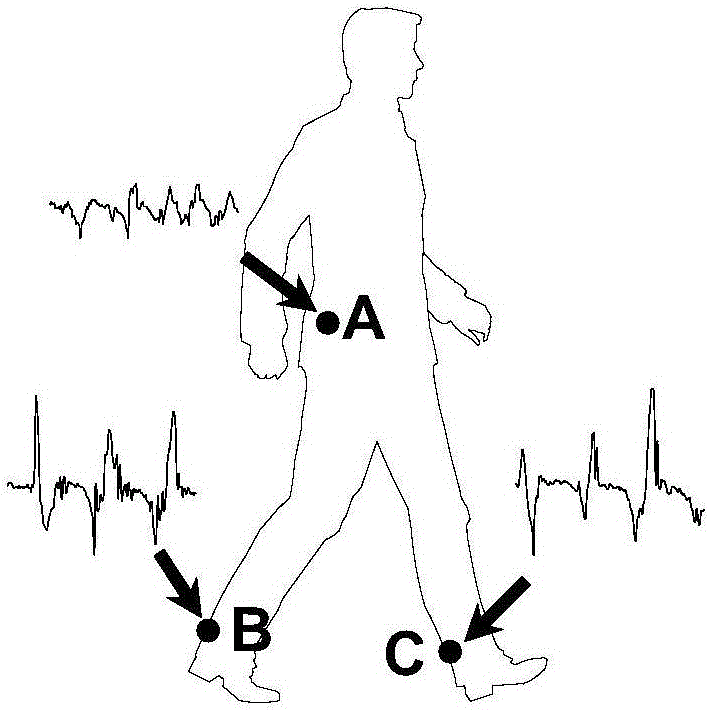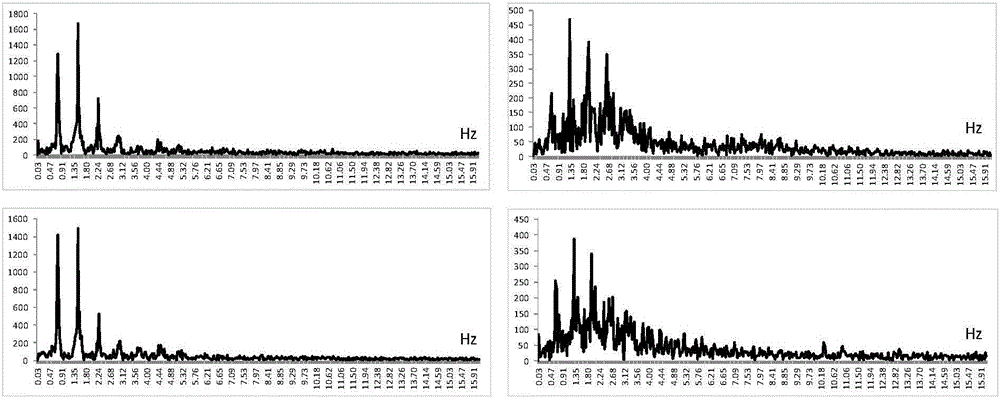Walking balance evaluating method and device and walking balance monitoring method and system
An evaluation method and balanced technology, applied in the directions of diagnostic recording/measurement, medical science, sensors, etc., which can solve the problems of high cost, failure to normalize and facilitate the daily activities of the subjects, and bulky equipment.
- Summary
- Abstract
- Description
- Claims
- Application Information
AI Technical Summary
Problems solved by technology
Method used
Image
Examples
Embodiment 1
[0097] According to Embodiment 1 of the present invention, the ability to suppress harmonics is an important embodiment of the balance ability, and the harmonic distortion rate h is used as the evaluation index to dynamically monitor and evaluate the walking balance ability. Here, the harmonic distortion rate expresses the harmonic content in the spectrum, and is the ratio of the root mean square value of all harmonic intensities to the fundamental wave intensity.
[0098] Combine below Figure 6 to Figure 8 Embodiment 1 according to the present invention will be described. In this embodiment, specifically, the forward direction is set as the +x direction, the left direction is set as the +y direction, and the upward direction is set as the +z direction, and the same is set in the following description.
[0099] Image 6 It is a schematic flowchart showing the walking balance monitoring method according to Embodiment 1 of the present invention. exist Image 6 In step S10, ...
Embodiment 2
[0130] As found by the inventors above, when the human body is walking, the acceleration harmonics between the left and right feet and between the left and right feet and the waist have correlation characteristics. The better the walking balance, the better the correlation between these acceleration harmonics. the higher. Embodiment 2 of the present invention performs dynamic monitoring and evaluation of the walking balance ability based on the correlation coefficient r as the evaluation index. Here, the correlation coefficient r expresses the degree of correlation of the data series between the spectra of different axes.
[0131] Combine below Figure 9 to Figure 11 Embodiment 2 according to the present invention will be described. Compared with Example 1, Example 2 is different in that the correlation coefficient between the acceleration harmonics between the left and right feet and between the left and right feet and the waist is used as the evaluation index. Therefore, ...
Embodiment 3
[0163] The above-mentioned Example 1 and Example 2 use different evaluation indicators to evaluate the walking balance, and the harmonic distortion rate and the correlation coefficient of the two indicators used are relatively independent indicators. It is not ugly to compare the experimental data in Table 1 and Table 2. The trend of the evaluation results of the two is basically the same, indicating that they both better reflect the balance ability of the human body when walking, but there are slight differences between the two, which indicates that the evaluation of the two reflects the human body from different aspects. Walking balance ability. In addition, because these two indicators are professional indicators, they are not easy to understand. Therefore, the present inventors came up with a method of comprehensively evaluating these two evaluation indexes. The third embodiment of the present invention uses the harmonic distortion rate h and the correlation coefficient r...
PUM
 Login to View More
Login to View More Abstract
Description
Claims
Application Information
 Login to View More
Login to View More - R&D
- Intellectual Property
- Life Sciences
- Materials
- Tech Scout
- Unparalleled Data Quality
- Higher Quality Content
- 60% Fewer Hallucinations
Browse by: Latest US Patents, China's latest patents, Technical Efficacy Thesaurus, Application Domain, Technology Topic, Popular Technical Reports.
© 2025 PatSnap. All rights reserved.Legal|Privacy policy|Modern Slavery Act Transparency Statement|Sitemap|About US| Contact US: help@patsnap.com



